In the spirit of Holi, the festival of colors, we’ve embraced the fusion of tradition and technology by creating stunning, vibrant images using AI image generators like Dall-E and Bing AI. This innovative approach allows us to capture the essence of Holi in a way that’s both imaginative and deeply respectful of the festival’s rich heritage. By inputting detailed prompts that reflect the joy, community, and color of Holi, we’ve generated unique pieces of art that celebrate this auspicious occasion. Each image, with its explosion of colors and scenes of jubilation, not only pays homage to the traditional aspects of Holi but also showcases the incredible potential of AI in the realm of creative expression. Through our blog, we invite you on a visual journey that marries the ancient with the cutting-edge, offering a fresh perspective on Holi celebrations.
Blog
Latest trends in technology, through the lens of AgilizTech
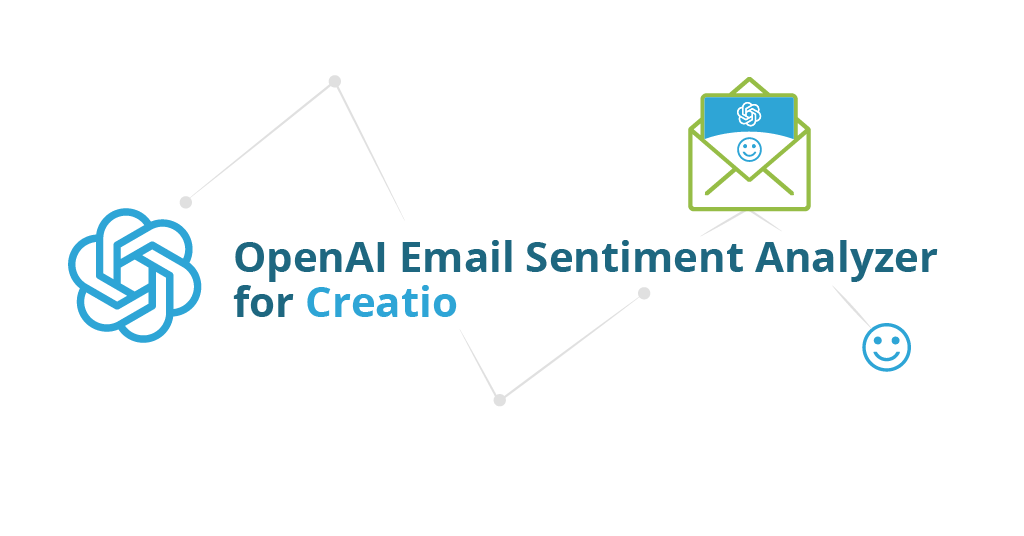
Enhancing Customer Support with Email Sentiment Analysis in Creatio using OpenAI
In today’s competitive business landscape, providing exceptional customer support is crucial for maintaining customer satisfaction and loyalty. However, managing a large volume of customer support emails efficiently and effectively can be challenging. This is where Email Sentiment Analysis comes into play, offering insights into customer sentiment to improve the overall support experience.
Sentiment analysis is the process of detecting the emotional tone or attitude of a text, such as positive, negative, or mixed. By using sentiment analysis on email content, one can gain insights into the feelings and opinions of the email senders or recipients, and use them for various purposes, such as customer feedback, customer service, etc
In this blog post, we’ll explain how OpenAI’s powerful tools are used to analyze email sentiments in Creatio, helping improve customer support strategies.
Problem Statement:
Inefficient customer support management due to overwhelming email volume, resulting in delayed responses to critical issues, inconsistent customer satisfaction, and a lack of systematic measurement of customer sentiment.
Solution:
Implement Email Sentiment Analysis in Creatio to automate the analysis of customer support emails, prioritize them based on sentiment scores, and gain valuable insights into customer sentiments and preferences using OpenAI.
Business Use Case:
A medium-sized e-commerce company receives hundreds of customer support emails daily but struggles to efficiently manage them. By implementing Email Sentiment Analysis in Creatio, the company can automate the analysis of email sentiments, prioritize urgent issues, and improve overall customer satisfaction and loyalty.
OpenAI Email Sentiment Analyzer for Creatio: Add-on setup
Visit the Creatio Marketplace to download/install the add-on package “OpenAI Email Sentiment Analyzer for Creatio“.
Features:
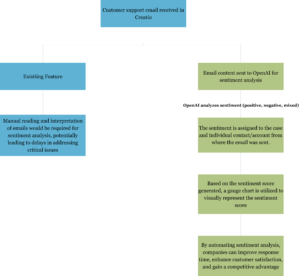
- Automated sentiment analysis of customer support emails: Utilizes OpenAI to automatically analyze the sentiment of incoming emails, saving time and effort for support agents.
- Provides insights into customer sentiments and preferences: Helps businesses understand how customers feel about their products or services, allowing them to tailor their offerings to better meet customer needs.
- Improves response time to critical issues: Prioritizes emails based on sentiment scores, ensuring that urgent customer issues are addressed promptly and efficiently.
- Enhances overall customer satisfaction and loyalty: By responding quickly to negative sentiment emails and resolving customer issues effectively, businesses can improve customer satisfaction and foster loyalty among their customer base.
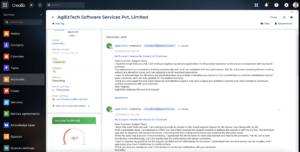
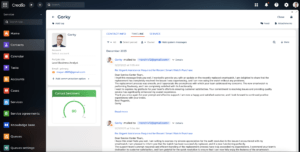
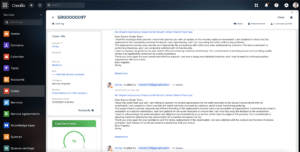
Privilege of OpenAI Email Sentiment Analyzer for Creatio download:
This add-on enables businesses to seamlessly integrate sentiment analysis into their CRM system, enhancing their customer support capabilities and improving overall customer satisfaction.
AgilizTech, a trusted partner for Creatio does customization for them. To know more on how we do customization for a business as per their requirements visit our AgilizTech – Creatio blog.

Launched Copilot for Microsoft 365: AI-Powered Productivity and Creativity for Organizations
Microsoft has launched a new premium subscription service called Copilot Pro for individuals. The subscription costs $20 per month and provides advanced AI capabilities, access to Copilot in Microsoft 365 apps, priority access to the latest models, enhanced AI image creation, and the ability to create Copilot GPTs 12.
For organizations, Microsoft has launched Copilot for Microsoft 365, a subscription that provides AI-powered productivity and creativity across emails, meetings, chats, documents, and more, plus the web. It is now available for businesses of all sizes, including small- and medium-sized businesses, and through Microsoft Cloud Solution Provider partners 3.
Copilot GPTs is a new feature that lets users customize the behavior of Copilot on a specific topic. A handful of Copilot GPTs are available today, and Copilot Pro users will soon be able to create their own Copilot GPTs using Copilot GPT Builder 12.
Microsoft has also launched a new Copilot mobile app that gives users the power of Copilot on the go, with access to GPT-4, Dall-E 3, and image creation. The app is available for Android and iOS users and has the same capabilities as the PC version. It is also available in the Microsoft 365 mobile app for Microsoft account holders 4.
In summary, Microsoft has launched a suite of new products and features under the Copilot brand. Copilot Pro is a premium subscription service for individuals that provides advanced AI capabilities, access to Copilot in Microsoft 365 apps, priority access to the latest models, enhanced AI image creation, and the ability to create Copilot GPTs. Copilot for Microsoft 365 is a subscription service for organizations that provides AI-powered productivity and creativity across emails, meetings, chats, documents, and more, plus the web. Copilot GPTs is a new feature that lets users customize the behavior of Copilot on a specific topic. Copilot mobile app is a new app that gives users the power of Copilot on the go, with access to GPT-4, Dall-E 3, and image creation1324
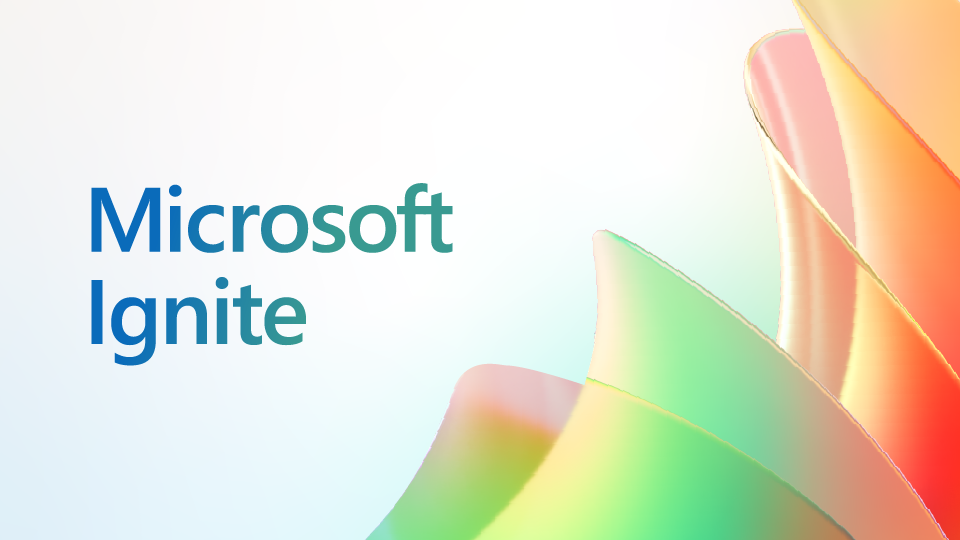
Microsoft Ignite 2023: A Brief Summary
In the Microsoft Ignite 2023 event, Microsoft outlines how AI transformation is reshaping work and how Microsoft is supporting customers, partners and developers with its AI solutions. It covers:
- Rethinking cloud infrastructure with new AI optimized silicon, Azure Boost, and partnerships with AMD and NVIDIA.
- Extending the Microsoft Copilot experience across Microsoft 365, Copilot Studio, Copilot for Service, Copilot in Microsoft Dynamics 365 Guides, and Bing Chat and Bing Chat Enterprise.
- Bringing Copilot to everyone with the general availability of Bing Chat and Bing Chat Enterprise as Copilot.
- Reinforcing the data and AI connection with Microsoft Fabric, a unified platform for data management and AI tools, and integration with Microsoft Office and Teams.
- Unlocking more value for developers with Azure AI Model-as-a-Service, Azure AI Studio, Vector Search, and new GPT models.
- Enabling the responsible deployment of AI with the Copilot Copyright Commitment, Azure AI Content Safety, and new AI and productivity tools for developers.
- Introducing new experiences in Windows to empower employees, IT and developers with Windows AI Studio and NVIDIA AI foundry service.
- Strengthening defenses in the era of AI with the Unified Security Operations Platform and Security Copilot embedded within Microsoft Defender XDR and other Microsoft security products.
Page Reference – Microsoft Ignite 2023: AI transformation and the technology driving change – The Official Microsoft Blog
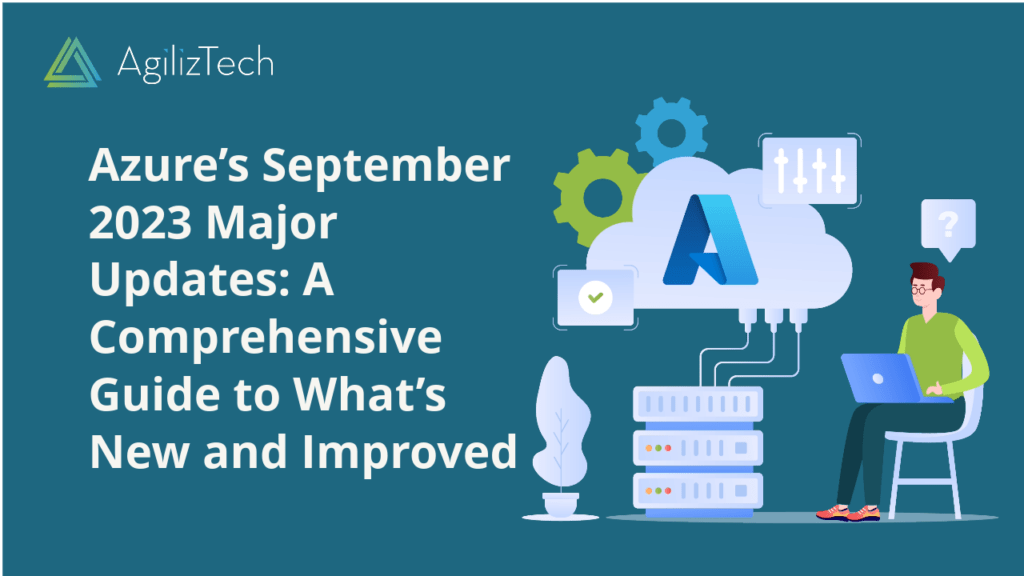
Azure’s September Updates – What’s New
Azure’s September Updates: Overview
This blog post provides Azure’s September Updates and brief information about each update.
Azure Microsoft has released several major feature updates in September 2023. These updates enhance the performance, security, and usability of Azure services. Here are some of the highlights:
Azure’s September Updates: Synapse Analytics
This update introduces a new query engine that supports both SQL and Spark workloads. The query engine optimizes the execution of complex queries across multiple data sources. It also enables real-time streaming analytics and machine learning integration.
Azure Active Directory
This update adds support for passwordless authentication using biometrics, FIDO2 devices, or phone sign-in. Using passwordless authentication helps to lower the chances of falling victim to phishing attempts or having your login credentials stolen. It also improves the user experience and productivity.
Azure Kubernetes Service
This update enables automatic scaling of node pools based on the workload demand. It also supports Windows Server containers and Azure Arc integration. These features allow users to run hybrid and multi-cloud applications on Azure Kubernetes Service.
Azure Cognitive Services
This update enhances the capabilities of several cognitive services, such as Computer Vision, Speech, and Language Understanding. The update adds new features such as object detection, sentiment analysis, and entity linking. It also improves the accuracy and performance of existing features.
Azure’s September Updates: DevOps
This update introduces a new dashboard that provides a comprehensive view of the development process. The dashboard shows the status of code commits, builds, tests, deployments, and feedback. It also allows users to customize the dashboard with widgets and charts.
These are some of the major feature updates that Azure Microsoft has released in September 2023. For more details, please visit the official Azure blog.
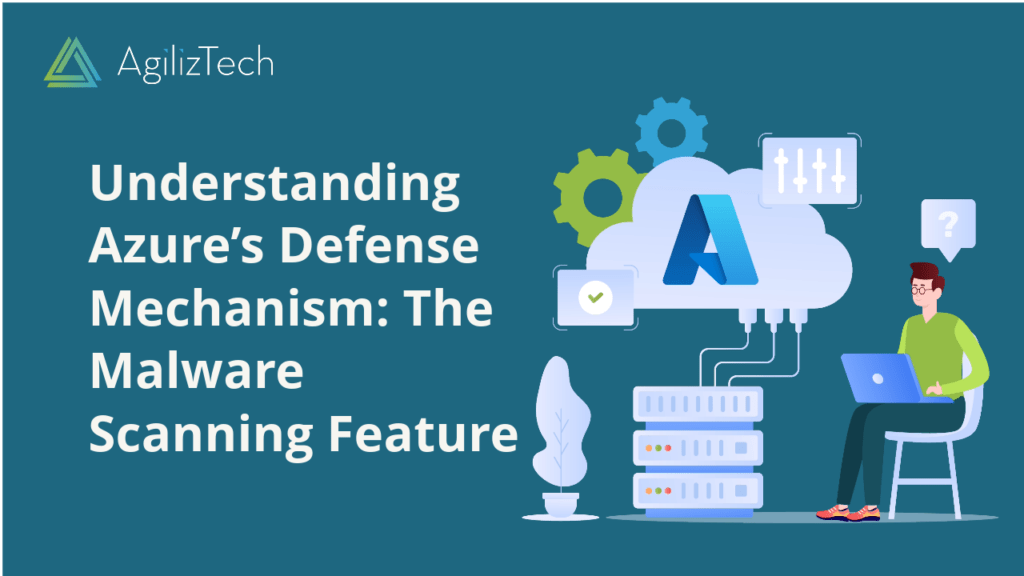
Azure Malware Scanning: A Comprehensive Guide
Are you looking for a way to protect your Azure storage accounts from malware threats? Do you want to ensure that your data is safe and secure in the cloud? If yes, then you need to know about Azure Malware Scanning in Defender for Storage.
Azure Malware Scanning is a feature that scans your Azure Blob storage accounts for malware infections. It detects and alerts you of any malicious files that may compromise your data or applications. You can also use it to quarantine or delete the infected files automatically.
This blog post will explain Azure Malware Scanning, its benefits, and usage.
What is Azure Malware Scanning in Defender for Storage?
Azure Malware Scanning is a feature that leverages Microsoft’s threat intelligence and machine learning to scan your Azure Blob storage accounts for malware. It supports both block blobs and append blobs, and scans both new and existing files.
Azure Malware Scanning is part of Azure Defender for Storage, a security service providing advanced threat protection for your Azure storage accounts. Azure Defender for Storage also offers anomaly detection, encryption enforcement, firewall auditing, and more.
What are the advantages of Azure Malware Scanning in Defender for Storage?
Malware Scanning in Defender for Storage offers several advantages for your cloud security, such as:
- Helps you prevent data breaches and comply with regulatory standards by detecting and removing malware from your storage accounts.
- Saves you time and resources by scanning your files automatically and continuously without requiring any manual intervention or configuration.
- Gives you visibility and control over your storage security by providing you with alerts, reports, and remediation options.
- Integrates with other Azure services and tools, such as Azure Security Center, Azure Sentinel, Azure Monitor, and Microsoft 365 Defender.
How to use?
To use Malware Scanning in Defender for Storage, you need to follow these steps:
- Enable Azure Defender for Storage on your subscription or resource group level. You can do this from the Azure portal, PowerShell, or CLI.
- Configure the malware scan settings for your storage accounts. You can choose to scan all or selected containers and specify the action to take when malware is detected. You can quarantine, delete, or log the infected files.
- Monitor the scan results and alerts from the Azure portal, Security Center, Sentinel, or Monitor. You can also view the scan reports and statistics from the Defender dashboard.
- Review and remediate the infected files from the quarantine container or the log file. If you’ve accidentally deleted some files, don’t worry! You can still retrieve them using the soft delete feature.
That’s it! You have successfully enabled and used Malware Scanning in Defender for Storage. Now, you can enjoy a more secure and reliable cloud storage experience.
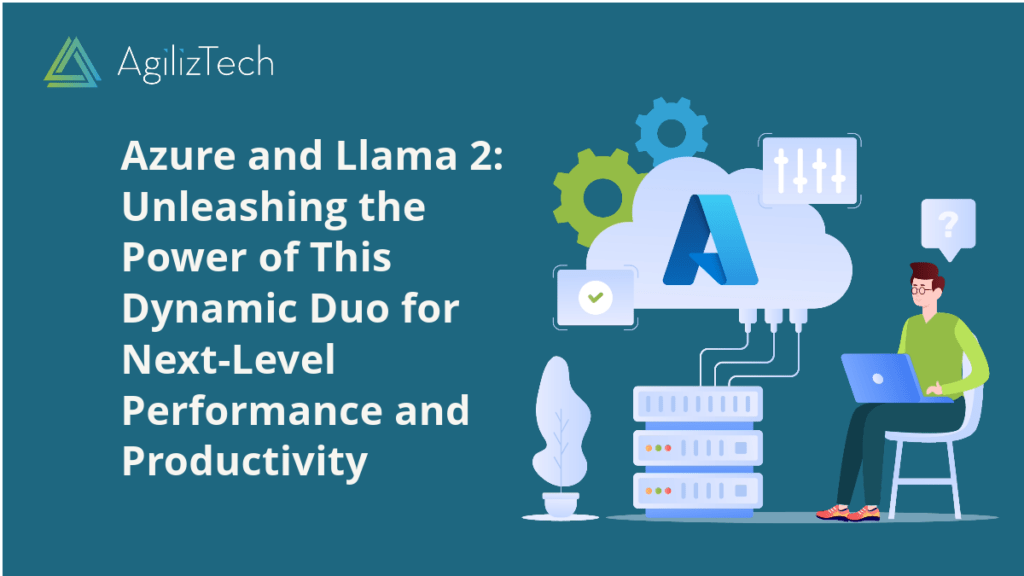
Azure and Llama 2: A Powerful Combination
Are you looking for a cloud platform that offers high performance, scalability, security, and flexibility? If so, you should consider Azure and Llama 2, the latest version of the popular open-source framework for building cloud-native applications. In this blog post, we will explore the features and benefits of Azure and Llama 2 and show you how to get started with them.
What is Azure?
Azure is Microsoft’s cloud computing platform that provides a range of services and solutions for various scenarios, such as web hosting, data analytics, artificial intelligence, Internet of Things, and more. Azure has over 200 products and services that you can use to build, deploy, and manage your applications on the cloud. Some of the advantages of Azure are:
- Supports multiple languages, frameworks, and tools, such as .NET, Java, Python, Node.js, Visual Studio, GitHub, etc.
- Offers global coverage with more than 60 regions and 170+ data centers worldwide.
- The pay-as-you-go pricing model lets you only pay for what you use, with no upfront costs or termination fees.
- Built-in security features and compliance standards protect your data and applications from threats and breaches.
- A rich ecosystem of partners and third-party integrations that enhance its capabilities and functionality.
What is Llama 2?
Llama 2 is the second major release of Llama, an open-source framework for building cloud-native applications using microservices architecture. Llama 2 aims to simplify the development, deployment, and management of microservices on the cloud. Some of the features of Llama 2 are:
- Supports multiple programming languages, such as Java, Kotlin, Scala, Groovy, etc.
- Provides a set of libraries and tools that help you create, test, and run your microservices, such as Llama Boot, Llama Cloud, Llama CLI, etc.
- Enables you to use various cloud services and platforms, such as Azure, AWS, Google Cloud Platform, Kubernetes, Docker, etc.
- Offers a reactive and non-blocking approach that improves the performance and scalability of your applications.
How do you use Azure and Llama 2 together?
Using Azure and Llama 2 together can help you leverage the best of both worlds: the power and flexibility of Azure’s cloud services and the simplicity and productivity of Llama’s microservices framework. Here are some steps to get started with Azure and Llama 2:
- Create an Azure account if you don’t have one already. You can get a free trial with $200 credit for 12 months.
- Install Llama CLI on your local machine. You can download it from the official website or use a package manager such as Homebrew or Chocolatey.
- Create a new Llama project using the command `llama init`. You can choose from various templates and options to suit your needs.
- Add Azure dependencies to your project using the command `llama add azure`. This will enable you to use Azure’s services such as App Service, Cosmos DB, Service Bus, etc.
- Deploy your project to Azure using the command `llama deploy azure`. This will create or update the necessary resources on Azure and upload your application code.
- Enjoy your cloud-native application running on Azure!
Conclusion
Azure and Llama 2 are a powerful combination for cloud computing that can help you build modern, scalable, secure, and flexible applications on the cloud. You can use them together to create microservices-based applications that take advantage of Azure’s rich features and services.
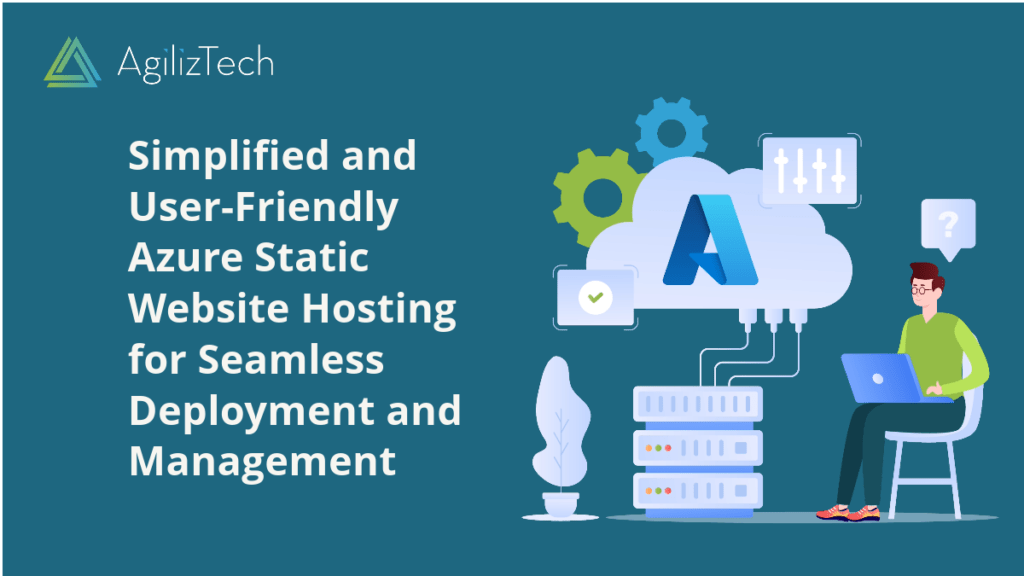
Azure Static Website Hosting Made Easy
This blog post will teach us how to host a static website in Azure Storage. A static website consists of HTML, CSS, JavaScript, and image files that do not require any server-side processing. Azure Storage is a scalable and cost-effective service that allows you to store and access data from anywhere.
Overview
Azure Storage offers a feature called static website hosting, which enables you to serve your static website directly from a storage account. You do not need to create or manage any web servers or virtual machines. You only need to upload your website files to a designated container in your storage account and configure a few settings.
Features of Azure Storage for Azure Static Website
Some of the benefits of using Azure Storage for Azure static website hosting are:
- Low cost: You only pay for the storage space and bandwidth you use. There are no additional charges for web servers or other resources.
- High availability: Azure Storage provides 99.9% availability for read operations and 99.99% for write operations. Your website will be accessible even if one or more regions experience an outage.
- Scalability: Azure Storage can handle any amount of traffic and data. You can easily scale up or down your storage account as your needs change.
- Security: Azure Storage supports encryption at rest and in transit. You can also use Azure Active Directory (AAD) to control access to your storage account and website files.
- Performance: Azure Storage integrates with Azure Content Delivery Network (CDN), which caches your website files at edge locations worldwide. This reduces latency and improves user experience.
Getting Started with Azure Static Website
To host a static website in Azure Storage, you need to follow these steps:
- Create an Azure Storage account or use an existing one. Ensure that the account is of the general-purpose v2 (GPv2) type and supports HTTPS traffic.
- Enable static website hosting on your storage account. Specify the container’s name that will store your website files and the name of the default document (usually index.html).
- Upload your website files to the container using any tool or method that supports Azure Blob storage, such as Azure Portal, Azure CLI, or Visual Studio Code.
- Enable Azure CDN on your storage account and create a CDN endpoint for it. This will generate a URL that you can use to access your website.
- Map your custom domain name to the CDN endpoint using your DNS provider. You can also enable HTTPS on your custom domain using a free certificate from Azure CDN.
Conclusion
Hosting a static website in Azure Storage is a simple and cost-effective solution that offers high availability, scalability, security, and performance. You can easily deploy and update your website without worrying about managing any web servers or virtual machines. You can also leverage Azure CDN to optimize your website delivery and user experience.
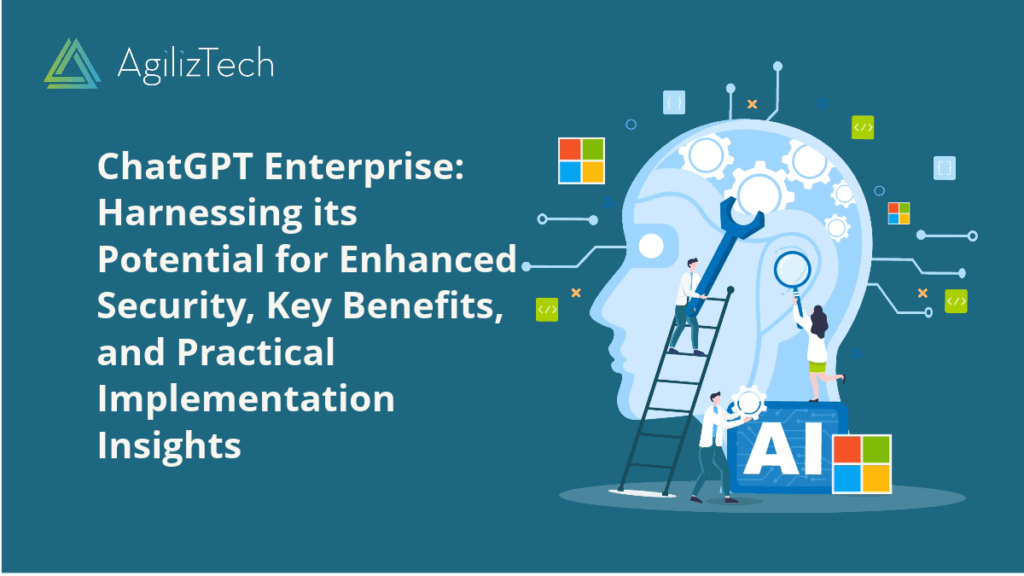
ChatGPT Enterprise: The Future of Communication
Overview
In the fast-paced realm of AI-driven communication, businesses crave innovative solutions that meet their conversational needs and prioritize security and privacy. Enter ChatGPT Enterprise, a dynamic platform that enhances interactions and fortifies data. In this blog post, we’ll delve into what ChatGPT Enterprise brings to the table and how you can harness its potential.
Security and Privacy Reinvented
In the digital age, safeguarding sensitive data is paramount. ChatGPT Enterprise actively takes security to new heights. It employs advanced security measures, such as robust data encryption and stringent access controls, to safeguard your information from prying eyes. This guarantees that your business can communicate securely, knowing your data is protected.
OpenAI’s unwavering commitment to privacy is evident in ChatGPT Enterprise. This AI respects user confidentiality, strictly adhering to data usage policies. Knowing that your conversations are not subject to data mining for personal information, you can have peace of mind, creating a safer and more ethical conversational experience.
Advantages of ChatGPT Enterprise
It delivers a wealth of benefits:
Customization: Tailor the AI to suit your business’s unique requirements, fine-tuning it to comprehend industry-specific terminology and nuances, making it a versatile asset across various domains.
Scalability: Seamlessly adapts to your business’s growth, whether you’re a budding startup or an international conglomerate.
Enhanced Precision: The AI’s precision in providing responses and context-aware suggestions elevates the caliber of your interactions.
24/7 Availability: It is at your service around the clock, offering constant support to your customers.
Cost-Efficiency: Automate routine tasks and streamline your support teams’ workload, resulting in substantial cost savings.
Statistics Speak Volumes
- The impact of OpenAI’s ChatGPT Enterprise is undeniable. In a recent survey by OpenAI, businesses using it reported a remarkable 30% reduction in response time and an impressive 20% increase in customer satisfaction.
- According to a recent study by Gartner, chatbots can reduce customer service costs by up to 30%, increase customer satisfaction by up to 40%, and generate up to 20% more revenue.
How to Dive into ChatGPT Enterprise
Embarking on your Chat GPT Enterprise journey is straightforward. Here’s a step-by-step guide:
- Request Access: Start by visiting the [OpenAI website](https://www.openai.com/chatgpt) to initiate your access request.
- Customize Your Model: Collaborate closely with OpenAI’s experts to tailor the AI to your specific requirements.
- Seamless Integration: Integrate ChatGPT seamlessly into your existing communication platforms or websites.
- Training: Familiarize your team with the AI and its capabilities to ensure optimal utilization.
- Launch: Deploy ChatGPT Enterprise and begin reaping the benefits of enhanced customer interactions.
In conclusion, ChatGPT Enterprise stands as a game-changer in the realm of AI-driven communication. With robust security, enhanced privacy, and a plethora of advantages, it empowers businesses to communicate more effectively and efficiently. Don’t miss the opportunity to elevate your customer interactions – request access to it today. Your business deserves nothing but the best in AI-powered communication.
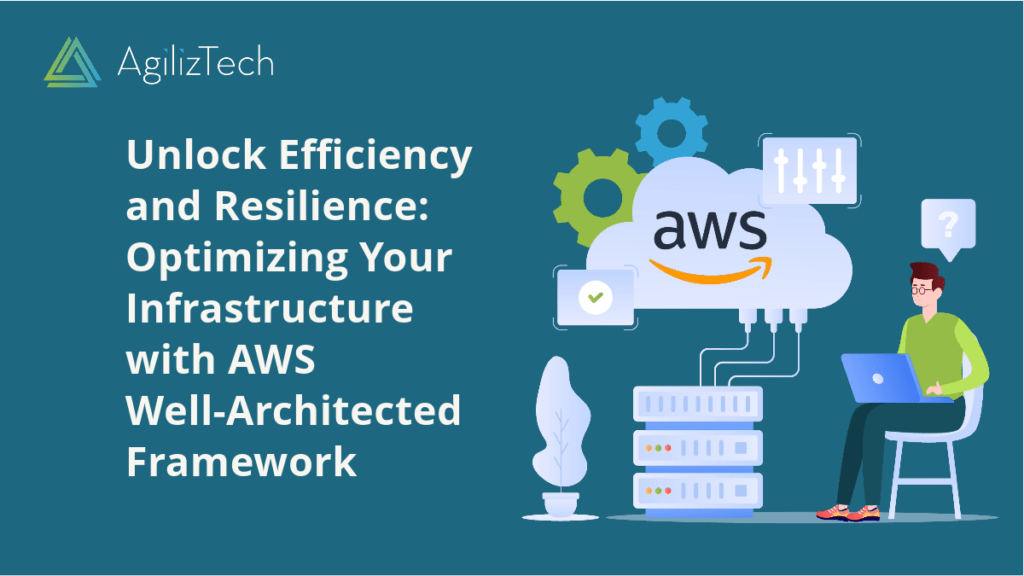
AWS Well-Architected: Optimizing Your Infrastructure
Overview
AWS Well-Architected Framework is a set of best practices and guidelines for designing and running cloud applications on AWS. It helps you to achieve security, reliability, performance, cost optimization, and sustainability for your workloads. This blog post will explain what AWS Well-Architected Framework offers, its advantages, and how to use it for your cloud applications.
What is AWS Well-Architected Framework?
AWS Well-Architected Framework is a framework that describes the key concepts, design principles, and architectural best practices for building and operating workloads in the cloud. It consists of six pillars:
- Operational Excellence pillar focuses on running and monitoring systems, and continually improving processes and procedures. It covers topics such as automation, event response, and standards.
- Security pillar focuses on protecting information and systems. It covers topics such as data confidentiality and integrity, user permissions, and security controls.
- Reliability pillar focuses on ensuring that workloads perform their intended functions and recover quickly from failures. It covers topics such as distributed system design, recovery planning, and scalability.
- Performance Efficiency pillar focuses on using resources efficiently and effectively. It covers topics such as resource selection, monitoring, and optimization.
- Cost Optimization pillar focuses on avoiding unnecessary costs and maximizing value. It covers spending analysis, resource allocation, and scaling strategies.
- Sustainability pillar focuses on reducing the environmental impact of workloads and supporting social responsibility. It covers topics such as carbon footprint, energy efficiency, and waste reduction.
Each pillar has a set of questions that help you to evaluate your architecture against the best practices and identify areas for improvement. You can use the AWS Well-Architected Tool to answer these questions and get recommendations for your workloads.
What are the Advantages of AWS Well-Architected Framework?
Using AWS Well-Architected Framework has many benefits for your cloud applications, such as:
- Improved quality: By following the best practices and design principles, you can ensure that your workloads meet your customers’ and stakeholders’ quality standards and expectations.
- Reduced risk: By applying the security, reliability, and sustainability measures, you can reduce the risk of data breaches, downtime, or environmental harm.
- Increased efficiency: By optimizing the performance and cost of your resources, you can increase the efficiency and productivity of your workloads and save money.
- Enhanced innovation: By adopting operational excellence practices, you can enable faster feedback loops, continuous improvement, and experimentation for your workloads.
Conclusion
AWS Well-Architected Framework is a valuable resource for cloud architects, developers, and operators who want to build secure, reliable, efficient, cost-effective, and sustainable cloud applications on AWS. Using the framework, you can improve the quality, reduce the risk, increase efficiency, and enhance the innovation of your workloads. You can use the AWS Well-Architected Tool or Partner Program to review your architecture and get recommendations for improvements. You can also use the AWS Well-Architected Labs to learn and implement some of the best practices.






















